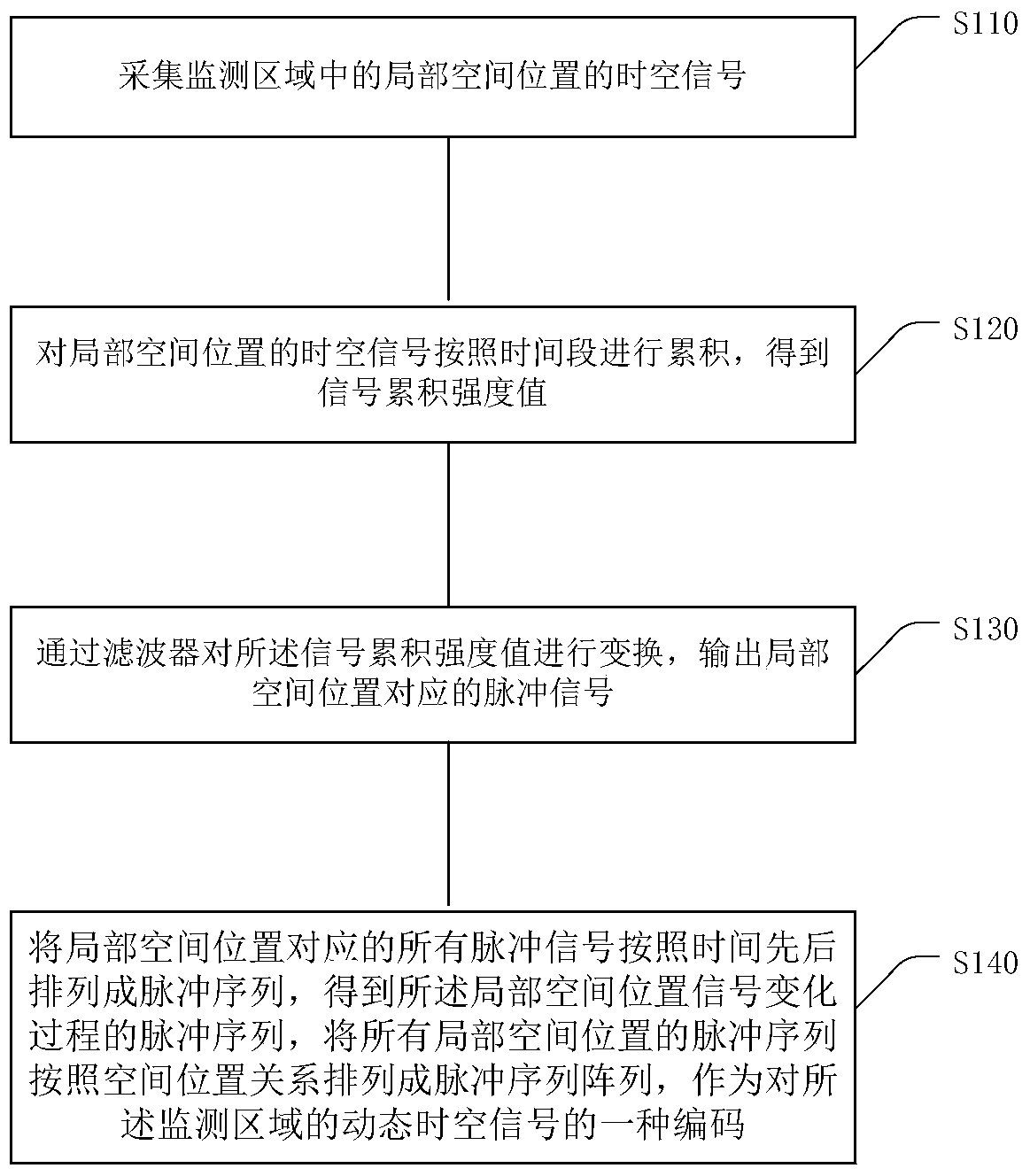Method and device for encoding spatiotemporal signals
A space-time signal and signal technology, applied in the field of information coding, can solve the problems of high cost of acquisition and processing circuit design, increased pixel size, and impossibility
- Summary
- Abstract
- Description
- Claims
- Application Information
AI Technical Summary
Problems solved by technology
Method used
Image
Examples
Embodiment 1
[0074] In order to fundamentally solve the problem of high-efficiency coding of space-time signals such as video, the present invention proposes a new solution from two levels of video representation and coding methods. Different from the method of representing dynamic images as image sequences (the "image" here is also referred to as "frame") since the appearance of film and television, the present invention first converts the signal change of each local spatial position (for an image, it is a pixel's The change process) is coded separately in time order. For dynamic images, this time series signal is called "pixel stream", and then the sequence matrix composed of time series signals is spatially encoded according to the spatial sparsity. It should be noted that although multiple pixel streams are still arranged in an array according to the relative spatial position, the pixel streams do not perform equal interval sampling and "frame-level alignment" like traditional video, bu...
Embodiment 2
[0120] This embodiment provides a device for encoding spatio-temporal signals, the specific implementation structure of the device is as follows figure 2 As shown, specifically, the following modules may be included: a signal collector 21, a signal accumulator 22 and a filter 23;
[0121] The signal collector is used to collect the spatio-temporal signals of each local spatial position in the monitoring area, and transmit the spatio-temporal signals to the signal accumulator;
[0122] The signal accumulator is used for accumulating spatio-temporal signals at local spatial positions according to time to obtain a signal cumulative strength value, and transmitting the signal cumulative strength value to the filter;
[0123] The filter is used to transform the cumulative intensity value of the signal, and output a pulse signal when the transformed result exceeds a specific threshold;
[0124] Arranging the pulse signals corresponding to the local spatial positions into a sequenc...
PUM
 Login to View More
Login to View More Abstract
Description
Claims
Application Information
 Login to View More
Login to View More - R&D
- Intellectual Property
- Life Sciences
- Materials
- Tech Scout
- Unparalleled Data Quality
- Higher Quality Content
- 60% Fewer Hallucinations
Browse by: Latest US Patents, China's latest patents, Technical Efficacy Thesaurus, Application Domain, Technology Topic, Popular Technical Reports.
© 2025 PatSnap. All rights reserved.Legal|Privacy policy|Modern Slavery Act Transparency Statement|Sitemap|About US| Contact US: help@patsnap.com


